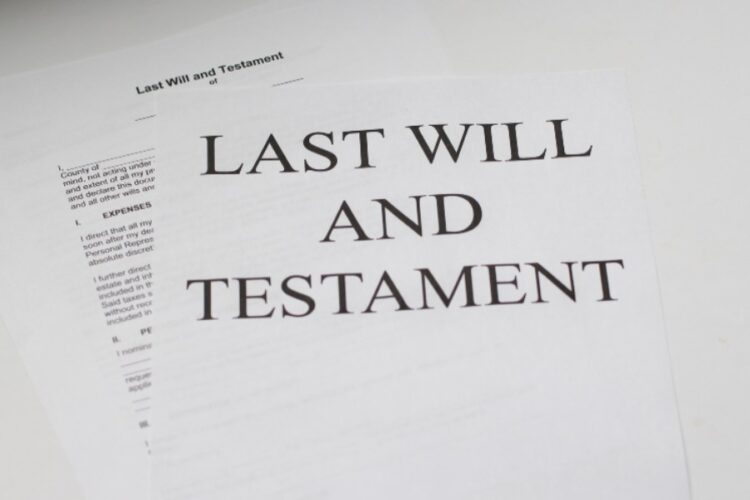Estate planning is a vital process that guarantees the distribution of your hard-earned assets according to your wishes after your passing. Shockingly, despite its importance, a staggering 67% of Americans have no estate plan in place. This statistic highlights the widespread lack of preparedness, leaving many families vulnerable to potential complications and disputes when it comes to inheritance.
To avoid such challenges and provide your loved ones with security and peace of mind, adopting a strategic approach to estate and will planning becomes paramount. In this post, we’ll delve into the key aspects of creating a well-thought-out will that reflects your intentions and protects your loved ones.
Understanding The Basics Of Wills
In estate planning, a will stands as a pivotal legal document that delineates the distribution of your assets and property upon your demise. This document not only ensures that your legacy is upheld but also facilitates the process of supporting individuals or charitable endeavors dear to your heart. Within a will, you can specify the allocation of diverse assets, spanning from real estate and bank accounts to investments and cherished personal items.
Moreover, alongside the importance of drafting a will, many individuals also consider establishing a trust. A trust acts as a legal entity, holding and managing assets for the benefit of designated beneficiaries. The average cost of a will and trust varies from state to state.
For example, the average cost of a will and trust in California is not the same as in Texas. This is based on the complexity and the attorney’s fees. While some choose DIY solutions, others opt for professional assistance to ensure compliance with all state-specific regulations and stipulations.
Assessing Your Estate And Assets
Mapping out your estate is a task that demands meticulous attention to detail. A thorough cataloging of your assets—from bank accounts and properties to investments and other cherished possessions—is indispensable. Estimating the worth of each of these items and visualizing their allocation to your beneficiaries can be challenging. It’s here that the significance of a dependable lawyer comes into play.
With a reliable legal partner, such as the team at the law office of Dennis Moore, you can feel assured that no stone is left unturned. Their expertise ensures that your will is not only comprehensive but also legally sound, safeguarding your legacy and providing clarity for your loved ones. Having them by your side transforms a daunting task into a seamless process.
Identifying Beneficiaries And Their Needs
Carefully selecting your beneficiaries is a critical aspect of will planning. Primary beneficiaries will receive the bulk of your assets, while contingent beneficiaries will inherit them if the primary beneficiaries are no longer alive.
While family members are often the primary beneficiaries, you may also wish to include close friends or charitable organizations that hold special significance in your life. Consider the unique needs and circumstances of each beneficiary to ensure your will meets their requirements.
Guardianship For Dependents
If you have minor children or dependents, designating guardians in your will is crucial. Choose guardians who will uphold your values for your children and are willing and capable of the responsibility. Engaging in open discussions with potential guardians can provide them with a clear understanding of your expectations.
Mitigating Taxes And Expenses
Estate taxes can substantially reduce the value of your estate, leaving less for your beneficiaries. As part of a strategic approach to will planning, explore various strategies to minimize tax liabilities, such as gifting, setting up trusts, or charitable donations.
Additionally, consider ways to reduce probate and administration expenses, as these costs can deplete the estate’s value and prolong the distribution process.
The Role Of Advanced Directives
In addition to your will, consider creating advanced directives to outline your healthcare preferences. Healthcare directives, powers of attorney for healthcare, and living wills can guide medical decisions on your behalf if you become incapacitated. By having these documents in place, you can rest assured that your healthcare preferences will be honored, bringing peace of mind to both you and your loved ones.
Communicating Your Intentions
Openly communicating your will and intentions to relevant parties is essential to avoiding misunderstandings and potential conflicts. Share your plans with family members and beneficiaries, explaining the rationale behind your decisions. Engaging in open dialogue can provide clarity and understanding, reducing the likelihood of disputes over your estate.
Storing And Keeping Your Will Safe
Once your will is drafted, it is crucial to store the original document securely. Inform trusted individuals, such as family members or your attorney, about the will’s location. Consider using a safety deposit box or electronic storage options with stringent security measures to safeguard your will from loss, damage, or unauthorized access.
Reviewing And Updating Your Will
Life is ever-changing, and circumstances are subject to constant fluctuations. Periodically review your will, especially after significant life events such as marriage, divorce, birth, or the death of a beneficiary. Regular updates ensure that your will accurately reflects your current wishes and protects your beneficiaries effectively. Engage professional legal advice during these reviews to ensure compliance with legal requirements.
Final Thoughts
Crafting a strategic will safeguards your assets, eases the burden on loved ones, and ensures your wishes are honored. By assessing your estate, appointing the right executor, and communicating openly, you can achieve peace of mind knowing your legacy is in safe hands. Make it a habit to periodically review and update your will to account for any life changes. Seeking professional advice is vital to securing a well-executed estate plan for the future.









